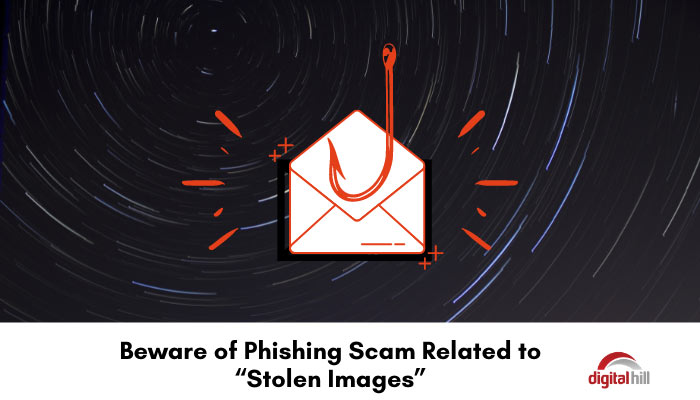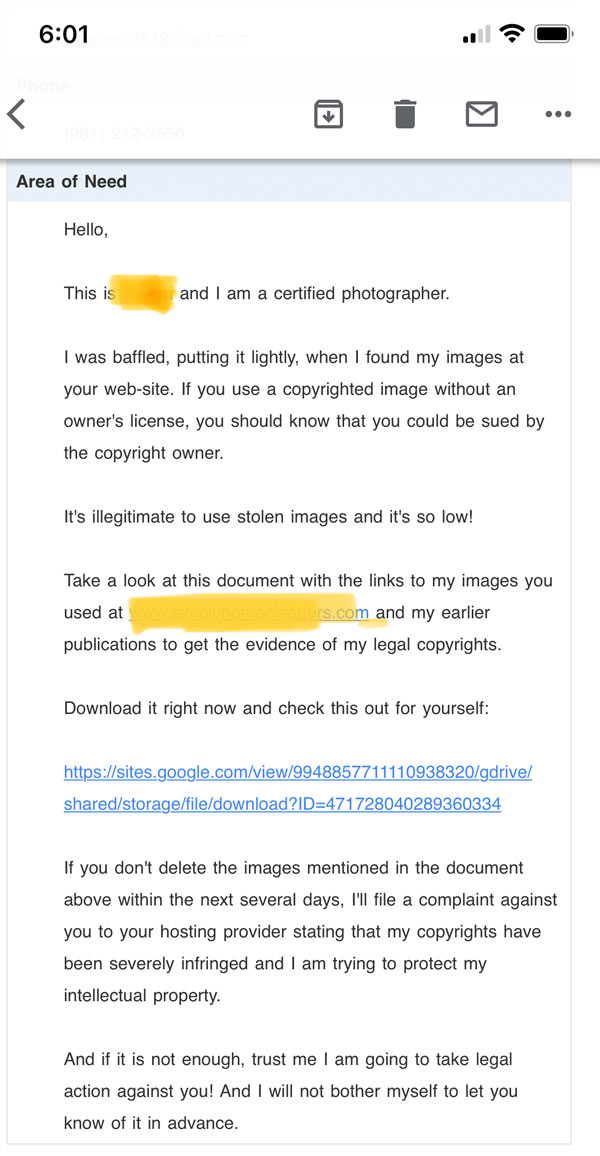Beware of Phishing Scam Related to “Stolen Images”

The current cyber world is full of scams that can take down unsuspecting internet users. While phishing scams are common, a new form of phishing scam is currently on the rise. The scam typically appears as a photo takedown request from an agitated photographer asking users to take down any photo uploads due to copyright issues. If you fall into this trap, your computer may become exposed to malware that can damage your files and important documents.
Most of those affected report that they received emails from an unknown sender accusing them of uploading copyrighted photos to their websites. The email also provides links to the photos with copyright violation issues and often has a threatening conclusion.
Risks of Clicking the Link
According to cybersecurity experts, ignoring these links is the best way to avoid phishing scams. Clicking the links potentially exposes you to cyber harm, such as data theft and exposure to malicious files. In the case of these phishing emails, users were greeted with a “URL Not Found” page upon clicking the link provided in the email.
What this means is that the URL doesn’t exist on the server. This message is typically displayed by sites whose files cannot be located from the server. Regardless, clicking the link may download a file or may grant cybercriminals access to your device. The link could also lead to a malicious phishing website requiring you to provide personal information.

How to Identify the Phishing Email
You can identify phishing emails in the following ways;
-
Emails demand urgent action
All phishing emails demand action with threatening consequences if urgent action isn’t taken. Cybercriminals use this method to rush recipients of the email into doing something without reading the email closely. Thereby missing any flaws and inconsistencies within the email.
-
Bad grammar and spelling mistakes
Often the easiest way to spot phishing email campaigns is the bad grammar and obvious spelling mistakes. Professional companies use spell-checking tools to verify their emails before sending them out. Therefore, you can easily use browser-based autocorrect and highlight features to spot these mistakes.
-
Awkward salutation
Emails sent in a professional environment often have a formal salutation. Therefore, you should suspect any email starting with “Dear” or any other phrase not normally used in formal conversations. Inconsistent email address, domain, and links. You can also easily identify inconsistencies in the email address, links, and domain name of phishing emails. For instance, if the email appears to originate from a company you have communicated with before, compare its address with those of previous emails. Also, hover over the links to check the URL that pops up.
-
Suspicious email attachments
As the use of collaboration tools, such as Dropbox and SharePoint increases, you should treat any email attachments suspiciously, especially those with unfamiliar extensions, such as .exe, .zip, or .scr.Emails requesting personal information. Treat any emails from unknown senders requesting personal information, such as login credentials, credit card details, and other sensitive user data, with caution. Spear phishers often forge website login pages and send an email with a fake login page link.
-
Emails that are too good to be true
Some emails are simply too good to be true. For instance, they could incentivize recipients to download an attachment or click a link for rewards. Avoid clicking such emails, especially if the sender is unfamiliar.
The Solution is Simple
Ignoring these emails is probably the best way to stay safe from phishing scams. However, to ensure that you aren’t a victim of such scams, always ask for permission to use sourced images on your website. Free images from Pexels and Unsplash are also a good option.
